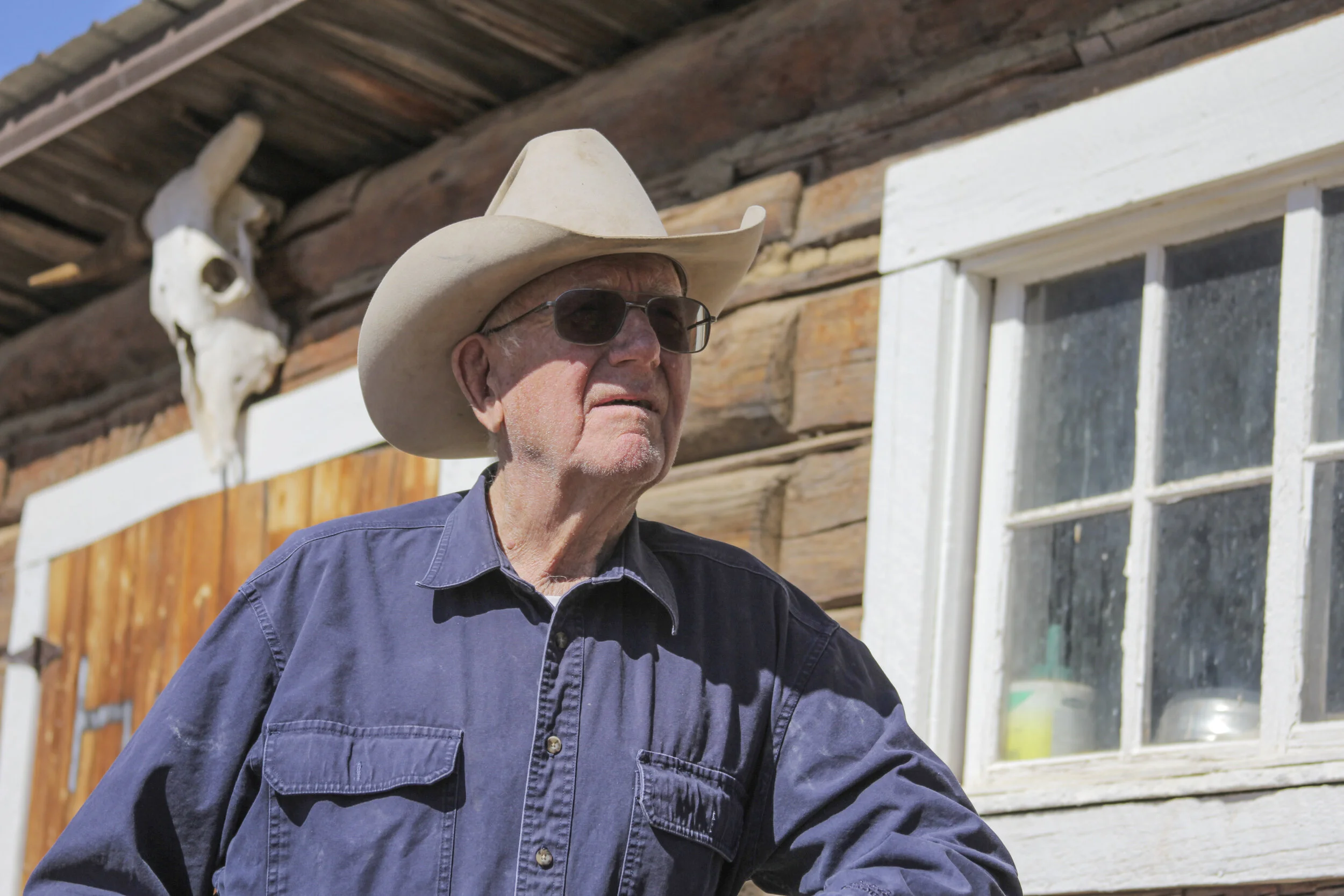Irv Alderson:
Country of Origin Labeling
Rancher Irv Alderson leaned against an old post near the tack barn at Bones Brothers Ranch near Birney, Montana. The Bones Brothers Ranch brand stamped proudly on the doors of the barn is over 130 years old. Irv readjusted his hat and looked out across the home pastures.
“I grew up looking through this same corral right here at guys breaking horses and stuff when I was a little kid…I grew up wanting to be a cowboy,” Irv said.
Irv has spent every one of his 88 years on the ranch. He’s watched the operation adapt and diversify to get through challenging times. While always a working cattle ranch, for a time, Bones Brothers was also a “dude ranch” where tourists came to experience “the wild west.”
“This is Bones Brothers Ranch,” Irv said, “It's a cow and calf operation and we sell feeder calves in the fall. We usually sell them through some cattle buyer that sells them to a feeder somewhere, and that's our main source of income.”
As with most cow-calf producers, in the Bones Brothers Ranch operation, Irv gets one payday a year for the cattle that go to market in October. Calves are born in April and then sold to market in October.
As a third-generation rancher, Irv has watched the markets change. The markets have continued to decline (ranchers increasingly profit less per calf, while feeders beholden to packers ask ranchers do more expensive treatments to calves before they sell). Ranchers’ profits are going down while costs and demands are going up.
One of the few positive changes Irv witnessed through the years came with mandatory Country of Origin Labeling (COOL). In 2002, mandatory COOL was included in the Farm Bill, giving ranchers a better price for their product and consumers transparency of where their meat was produced. In 2015, Congress voted to repeal COOL for beef and pork under threat of fines from the World Trade Organization and ultimately pressure from lobbyists of corporate meatpackers who control more than 84% of U.S. cattle slaughter.
“What Country of Origin Labeling is, is our ability to label our product and where it comes from,” Irv said. “I think it's terribly important to people nowadays, to know where their food comes from.”
When COOL was repealed, not only did it take away consumers’ ability to know where their beef and pork was raised and processed, it slashed the price ranchers received for their products.
Some 93% of Americans polled say they want to know where their food comes from, and 75% say that country of origin is a major factor in their purchase. Without mandatory COOL, grocery stores across the U.S. sell meat raised in other countries falsely repping “Product of the U.S.A.” labels. American producers are left paying the price. The largest corporate meatpackers and retailers take the profits while independent cattle producers are squeezed out of business. 17,000 cattle ranchers go out of business per year.
“When they repealed country of origin labeling, they took a buck off a calf [per pound], a buck off the steer calves [per pound] and a buck off the heifer calves [per pound]. So, the two or three loads that we send out of here from this ranch -- that $60,000 a truckload is money that we don’t have to pay bills,” Irv said.
That loss of revenue has made a huge impact on ranchers and rural communities across the country. The number of cattle producers plummeted from 1.6 million in 1980 to 950,000 in 2009.
Irv said when COOL was in place he and his family sold a steer calf for $2.52 per pound.
“We weren't by any means the top of the market, but it was a lot of money for a load of steer calves,” Irv said.
Irv said under COOL, heifers brought in $2.42 per pound.
“If they reinstated country of origin labeling tomorrow, I know it'd help,” Irv said.
Irv said COOL is the only way for consumers to trust the beef they’re purchasing and the only way for ranchers to label their products. The only other option is to buy directly from your rancher, but not everyone can do that.
“COOL is our ability to label our product – beef raised and processed in the United States,” Irv said.
Irv’s grandchildren are growing up in the house next to his. His grandchildren are the fifth generation on the land. He’s thankful for the childhood they’ve been afforded on the ranch and hope that one day they’ll want to go into the family business too.
